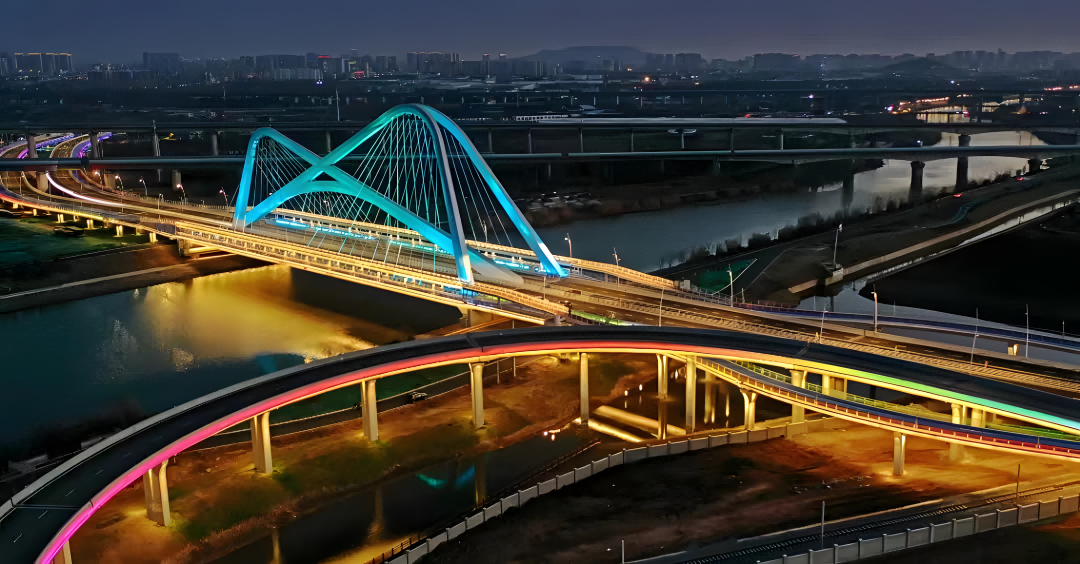Transform Your Nights: A Practical Guide to Outdoor RGB & RGBW LED Lighting
Remember the humble light bulb? Thomas Edison’s invention illuminated our world, but today’s lighting has evolved into something far more dynamic. Outdoor RGB LED lighting isn't just about seeing in the dark anymore; it’s about creating atmosphere, enhancing security, and literally painting your property with light to match any mood or event. Whether you're a homeowner wanting to jazz up a patio party or a business owner aiming for eye-catching facade illumination, color-changing LEDs offer incredible flexibility. But navigating the options can be tricky. Let’s break it down practically.
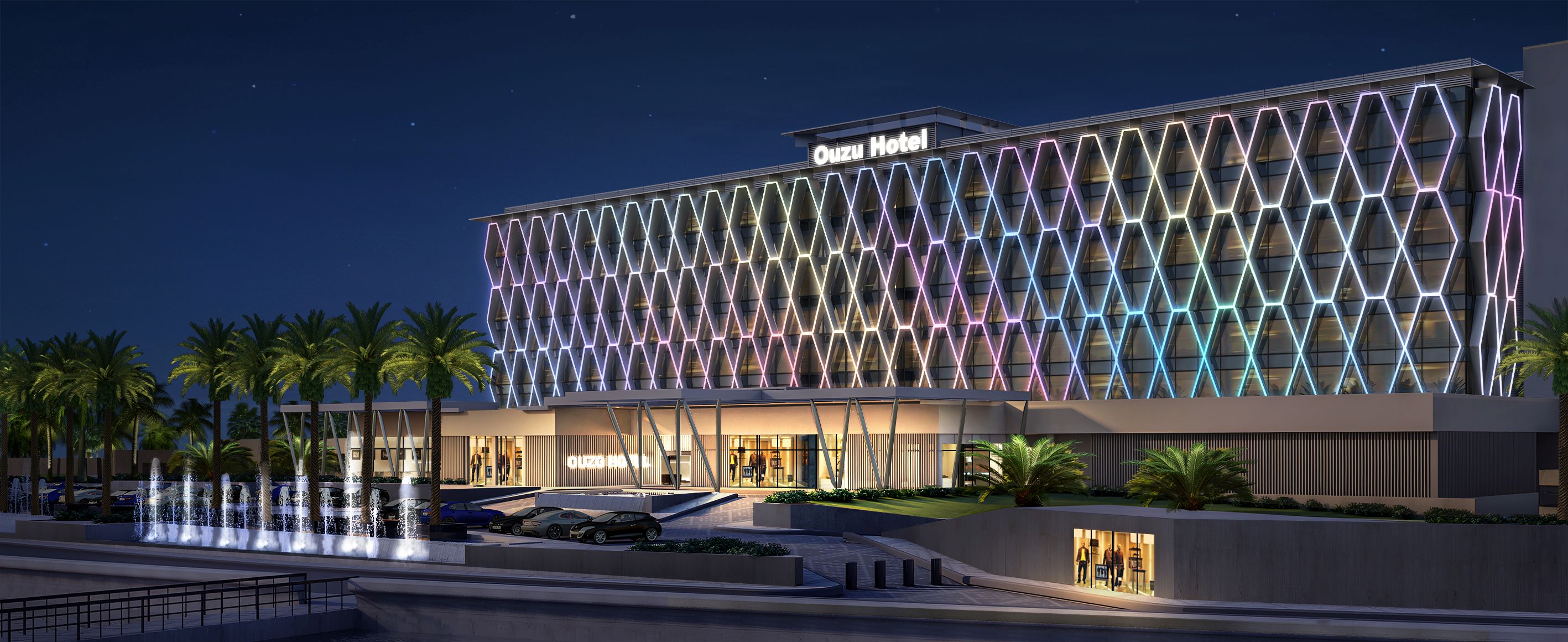
1. RGB vs. RGBW: Getting the Colors (and Whites) Right
RGB (Red, Green, Blue): This is the foundation. By mixing these three primary colors at varying intensities, RGB LEDs can produce a vast spectrum of hues – theoretically over 16 million! It's fantastic for saturated colors, mood lighting, and dynamic effects. Crucially though, don't expect perfect pure white from standard RGB. Mixing red, green, and blue at full power creates a simulated white, often appearing slightly cool, warm, or even a bit muddy depending on the LED quality. It also consumes more power to achieve this mixed white.
RGBW (Red, Green, Blue, + White): This adds a dedicated white LED chip (usually warm white, cool white, or sometimes tunable white) alongside the RGB diodes. This is the key difference and advantage:
Superior Whites: You get crisp, clean, pure white light directly from the dedicated chip, far better than any RGB mix. Essential for architectural highlighting or areas where true white is needed.
Better Pastels & Light Colors: Mixing the dedicated white with the RGB colors produces softer pastels and more nuanced light colors that pure RGB struggles with.
Higher Efficiency for White Light: Using the dedicated white chip consumes significantly less power than driving all three RGB chips to full for a simulated white.
Practical Differences Beyond Color:
Controllers: While both RGB and RGBW strips commonly use 4-pin connectors (often labeled +12/24V, R, G, B), RGBW requires a controller capable of handling the fourth channel (W). RGB controllers won't work with RGBW strips. Some advanced RGBW setups might use 5 or 6 pins for additional features, but the core difference is the dedicated white channel requirement in the controller.
Cost: RGBW is generally more expensive than RGB due to the extra LED chip and more complex controllers.
Installation: Physically mounting the strips or fixtures is usually similar. The complexity lies in ensuring you have the correct matching controller and power supply for RGBW.
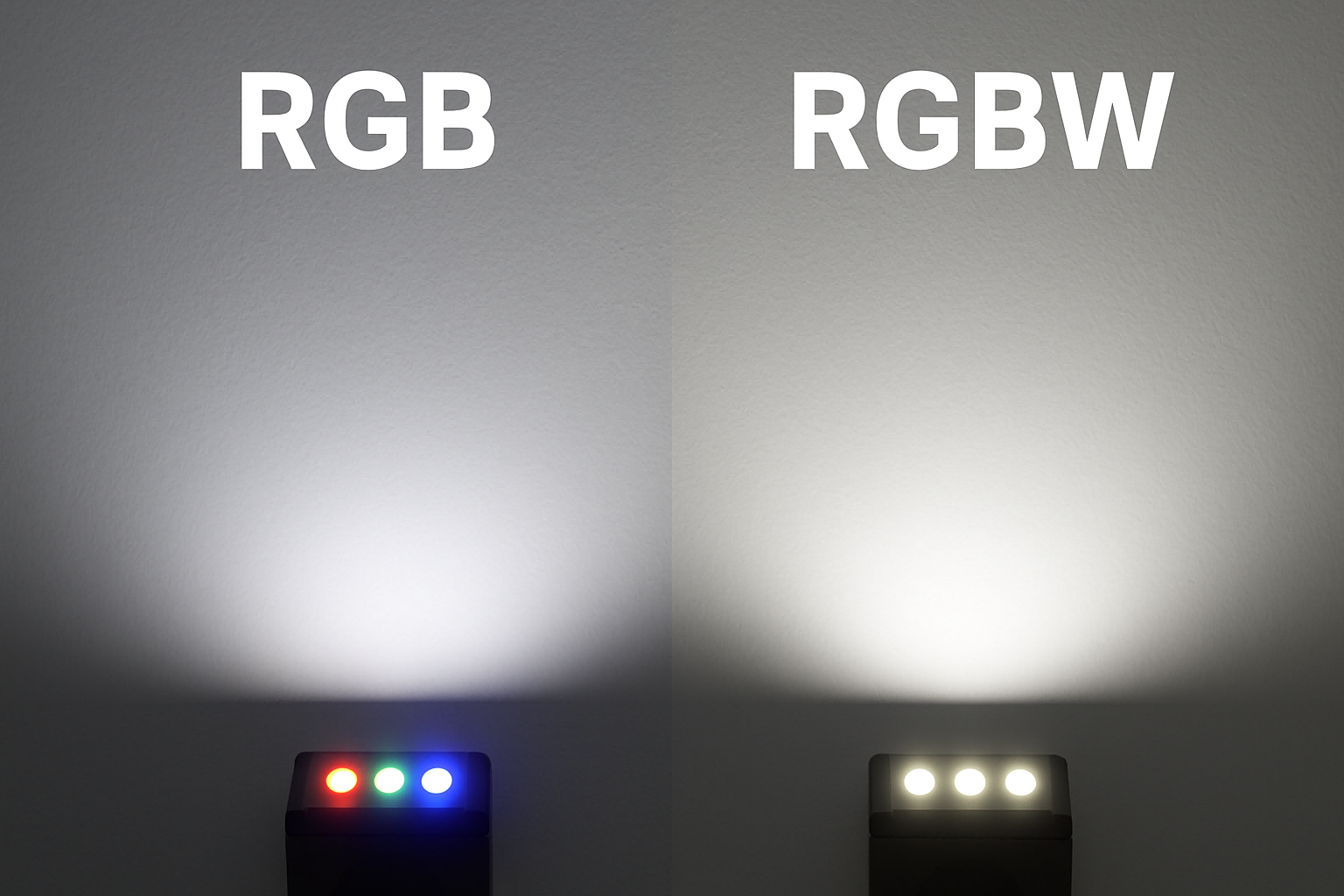
2. Why Choose Color-Changing LEDs? Real Benefits:
1. Atmosphere on Demand: This is the big one. Instantly shift from vibrant party mode to tranquil spa-like relaxation. Highlight architectural features one day, celebrate a holiday the next. It offers unmatched flexibility for mood setting.
2. Enhanced Curb Appeal & Security: Well-placed color washes or spotlights dramatically enhance a building's aesthetics at night. Bright white or dynamic color-changing modes can also deter unwanted activity by eliminating dark corners.
3. Energy Efficiency & Longevity: Like all LEDs, RGB and RGBW options are vastly more energy-efficient than old halogen or incandescent lights and generate much less heat. Combined with lifespans often exceeding 30,000 hours, they offer significant long-term savings. Note: While some claim specific colored light (blue, green, pink) offers health benefits like stress reduction, these claims often lack strong scientific consensus for general outdoor lighting applications. The primary mood benefit comes from the ambiance you create.
4. Design Versatility: The sheer range of colors and effects opens up creative possibilities unimaginable with static white lighting.
3. Where Can You Use It? Endless Possibilities (With Examples):
Facade Lighting: Wash walls with color, highlight textures, or dynamically change a building's entire look. (Example: A restaurant cycling through colors for different events).
Landscape Spotlighting: Uplight trees and shrubs, graze stone walls, or highlight sculptures and water features. Use warmer whites for a cozy feel, cooler whites for modern, or colors for drama. (Tip: Use narrow beam spots for precise highlighting).
Path & Deck Lighting: Integrated RGBW linear lights in steps or deck railings provide safety lighting in warm white and can switch to colors for ambiance. (Consider IP67 rated fixtures for ground contact).
Water Features: Submersible RGB/RGBW lights (IP68 rated) are essential for ponds, fountains, and pools. They create magical underwater effects. (Crucial: Ensure proper waterproof rating and safe low-voltage installation).
Entertainment Areas: Patios, pergolas, and outdoor kitchens come alive. Use strips under bars or benches, wall washers on feature walls, or spotlights on key areas. (RGBW is great here for functional white task lighting switching to party colors).
Signage & Accent Lighting: Make business signs pop or add colorful accents to structures. RGB strips are popular for this.
Seasonal & Event Lighting: Go beyond basic Christmas lights. Create custom color schemes for holidays, weddings, or themed parties. Many RGB pixel systems allow individual bulb control.
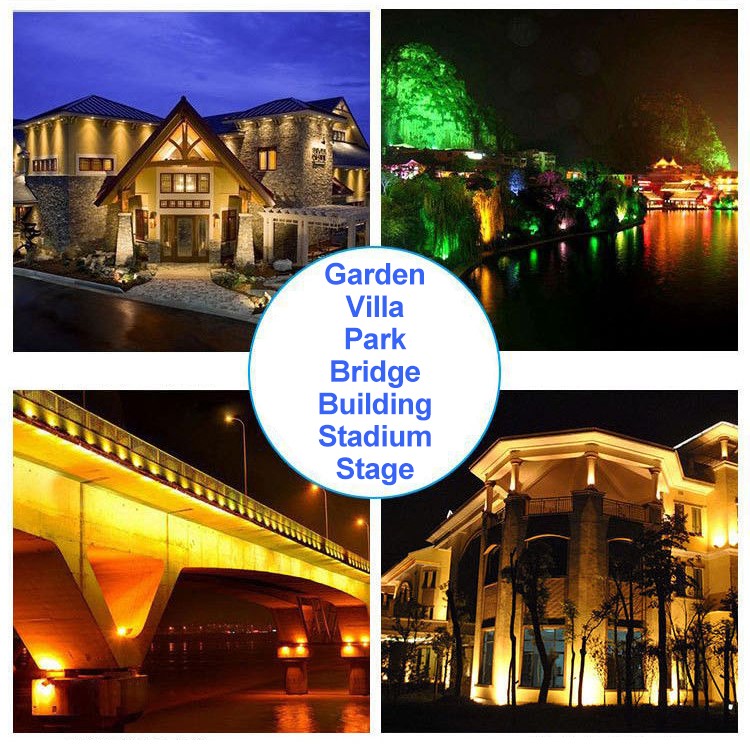
4. Choosing Your Tools: A Rundown of Common Fixture Types
RGB/W Wall Washers: Designed to bathe large vertical surfaces evenly. Look for wide beam angles (often 100-120 degrees), good color consistency across the beam, and high IP ratings (IP65 minimum, IP66/IP67 better for harsh weather). Ideal for facades, fences, large feature walls. Choose RGBW if you need true white for architectural clarity.
RGB/W Linear Lights: Sleek, continuous lines of light. Can be surface-mounted, recessed, or suspended. Perfect for modern architecture, outlining structures, under eaves, in steps, or as coves. RGBW linear lights are excellent for pathways or decks needing both white light and color options.
RGB/W Floodlights: Provide broad, intense illumination over large areas. Used for security, lighting sports courts, washing large walls, or illuminating big landscape elements. Ensure high lumen output and appropriate beam spread. RGBW floods are useful for areas needing strong white light (security) plus color capability (events).
RGB/W Spotlights: Focused beams for precise highlighting of trees, sculptures, architectural details, or signage. Look for adjustable heads and beam angle options (narrow for tight focus, wider for small trees). Essential tool for landscape drama.

RGB/W Strip Lights (Tapes): Highly versatile for linear accent lighting. Use under counters, in coves, along steps, on signage, or even creatively on furniture. Critical: Ensure strips are rated for outdoor use (silicone coating, IP65/IP67). Use sturdy aluminum channels for protection and heat dissipation, especially for longer runs or higher power strips. RGBW strips are highly recommended for areas needing both task lighting (under a covered outdoor bar) and color accents.
Submersible Fountain/Pond Lights (IP68): Specifically designed for permanent underwater installation. Must have robust sealing and corrosion-resistant materials (stainless steel). RGBW versions allow beautiful underwater white light or crystal-clear colored effects.
Specialty (Pixel Lights, Christmas): Advanced systems allow individual bulb control for intricate animations and displays. Great for ambitious holiday lighting or commercial signage.
5. Taking Control: How to Manage Your Color Lights
Simple RF Remotes: Common for basic systems. Controls color, brightness, and pre-set patterns. Range is typically 20-30 meters line-of-sight. Easy for homeowners.
WiFi & Smartphone Apps: Offers more flexibility: schedule lighting scenes, integrate with smart home systems (like Alexa/Google Home), and access a wider color palette. Great for convenience and complex setups.
DMX Controllers: The professional standard for large-scale or complex installations (theatres, large facades, intricate landscape projects). Allows precise control of hundreds or thousands of individual fixtures/lights via a single cable run (DMX512 protocol). Requires more setup but offers maximum programmability. Often needs a DMX decoder/driver for each fixture or group.
DALI Controllers: Primarily used in commercial building automation for energy management and scene setting. Offers robust two-way communication and reliability for large installations like office facades or hotels, but less common for purely dynamic RGB effects compared to DMX. Focuses more on tunable white and static scenes.
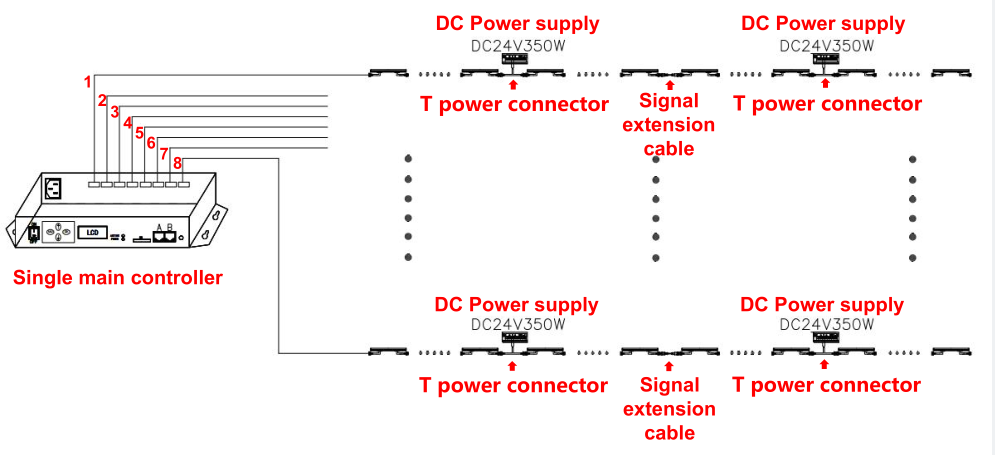
6. Key Considerations Before You Buy:
True White Need? If pure, clean white light is essential (for security, architectural clarity, task lighting), RGBW is strongly recommended. Pure RGB simply can't match it.
Waterproofing (IP Rating): Outdoor means exposure. IP65 (protected against low-pressure water jets) is the minimum for most outdoor locations. IP66/IP67 (strong jets/temporary immersion) is better for areas prone to heavy rain, snow, or hose-down. IP68 is mandatory for permanent submersion (ponds, fountains).
Voltage & Power: Most systems are low-voltage (12V or 24V DC), requiring a transformer/power supply. Match the supply voltage to the lights! Calculate total wattage needs (including future expansion) and choose an adequate power supply with ~20% headroom. Remember, voltage drops over long cable runs – especially with 12V systems. Plan for thicker gauge wire or power injection points for runs over 15-20 feet.
Controller Compatibility: Ensure your chosen controller works with your lights (RGB vs. RGBW) and offers the features you need (app control, scheduling, DMX).
Quality Matters: Cheaper LEDs often suffer from poor color rendering (especially in white mode), inconsistent color mixing, shorter lifespans, and lower waterproofing integrity. Invest in reputable brands with good warranties.
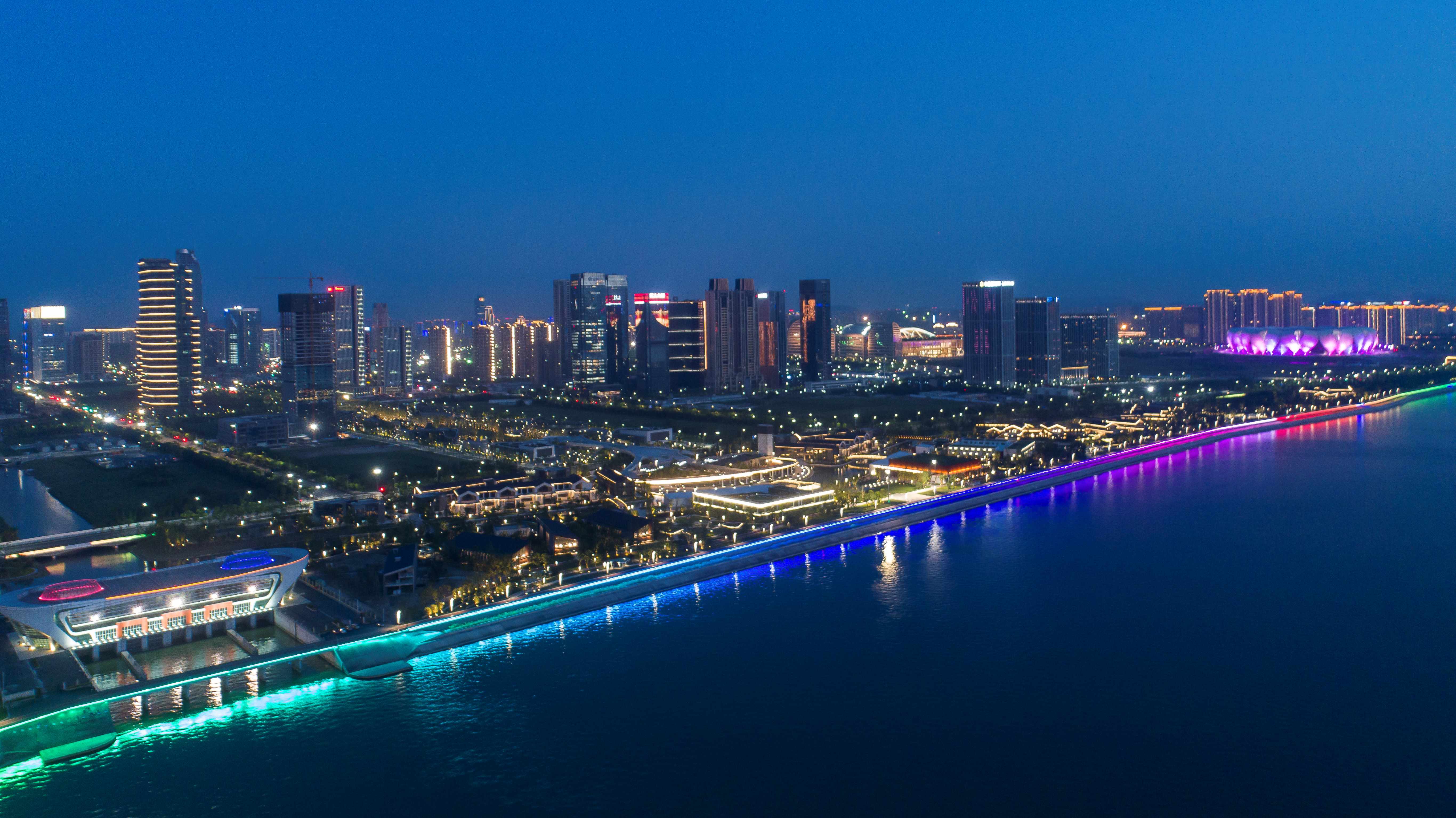
Light It Up, Your Way
Outdoor RGB and RGBW LED lighting unlocks a world of creative potential for your property. By understanding the core difference between RGB and RGBW (that crucial dedicated white chip!), choosing the right fixture types for the job, ensuring proper waterproofing and power, and selecting a suitable control system, you can transform your outdoor space into something truly spectacular, functional, and uniquely yours. Ditch the limitations of static white light and embrace the dynamic possibilities of color.
Buy RGB Outdoor Lights from LNJAMI
At LNJAMI, we are committed to illuminating outdoor spaces with innovation, quality, and reliability. Since 2008, we’ve specialized in providing professional RGB LED lighting solutions that bring architecture, landscapes, and public areas to life — day and night.
From RGB linear lights and wall washers to DMX-controlled custom lighting systems, our products are trusted by lighting designers, contractors, and project engineers across the globe. We combine precision manufacturing, high-performance components, and dedicated support to deliver outstanding results in every installation.
Whether you need a tailor-made lighting solution or a ready-to-ship product, LNJAMI is here to assist. Tell us your vision — we’ll help you bring it to light.





